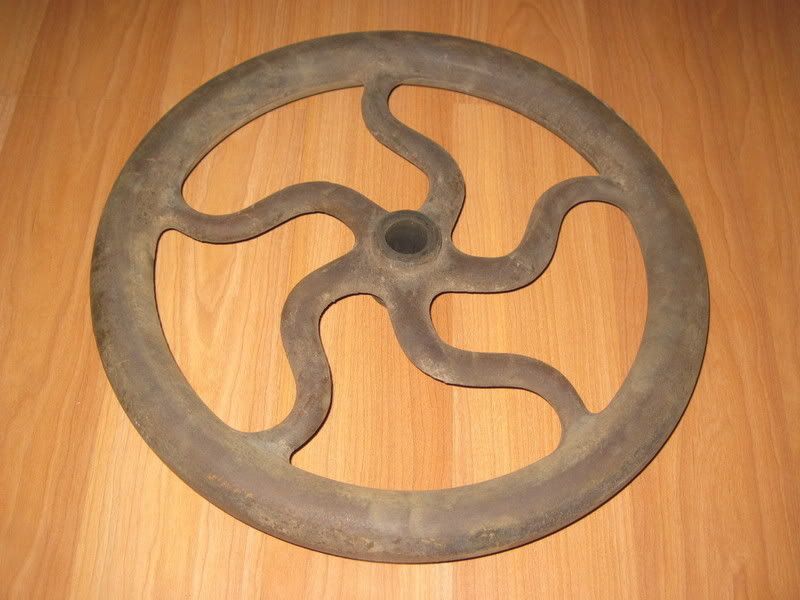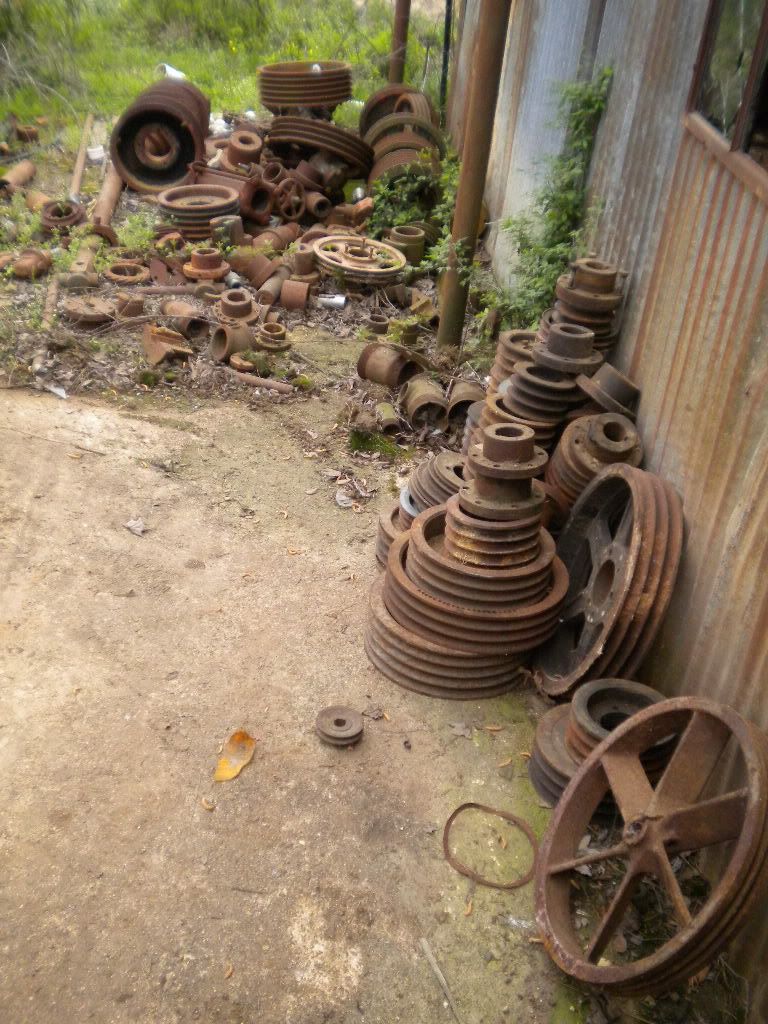Howdy Rustn Dust - Firstly, I'm loving the screen name. Good to have you join here.
I did my best to read the model number the day I brought this guy out of the dirt. It had been laying there face down for years. I would imagine if I were to re-inspect the drill I would find it is a "197" cast for the model number, and not "107" as I'd indicated before. I will have a look the next time I'm at the shop.
I believe this is a picture of the original hand wheel for our post drill. It is 14" and weighs 19lbs. Whether there were "factory options" available for the drive remains elusive to me.

What I can tell you about mine's service is this. It was placed into service at a local fabrication shop built in the early '20s and owned by a local oil production company; Kinard Oil. To my understanding the shop did not have staff, but rather was a fabrication shop for the roughnecks to have access to as they needed it. My father, who is still alive, can remember it being present in that shop. He has stated the shop was full of various equipment that was flat belt driven - that there was a central driver - and that belts would be slipped on/off as required to drive the various equipment. In looking at mine closely, it would appear the flat belt pulley is hand fabricated. Actually, it seems they may have taken the hand crank and modified it to flatbelt.....crude cuts and welds. That is not to suggest a flat-belt pulley wasn't available from Champion - only that this one was custom fabricated. I'll get close-ups and share them. As a note - I also have the huge Rock Island vise that was present in that shop. According to my father, mounted on a piece of cedar log in the center of the shop.
The way your sheave is attached is typical of what I've seen of sheaves/pulley attachment. I'm struggling at the moment to cough up the word for them, but basically a interlocking piece that pins the sheave to the shaft. I have several pullers that I uncovered that assist with their removal. I suspect a puller will be a must to remove yours. In the following picture you'll see many examples of this piece that I speak of. They are sized appropriate for the shaft and sheave.

When you use this cam to force the toothed collar (photo eight) onto the gear, the auto feed engages, and the hand feed can no longer be used"
It is great to see, and understand, the lowering mechanism and the parts that I have missing. This certainly sheds new light for me. Thank you for explaining the auto-feed in detail. You have me rethinking whether I will continue to hold my project for those parts. I suspect you are correct about it's being of little use except for at hand crank speeds. I would imagine it was a simple matter of providing the PERSON with another hand. If YOU are not otherwise the drive, it's probably a lot easier to lower/raise as required.